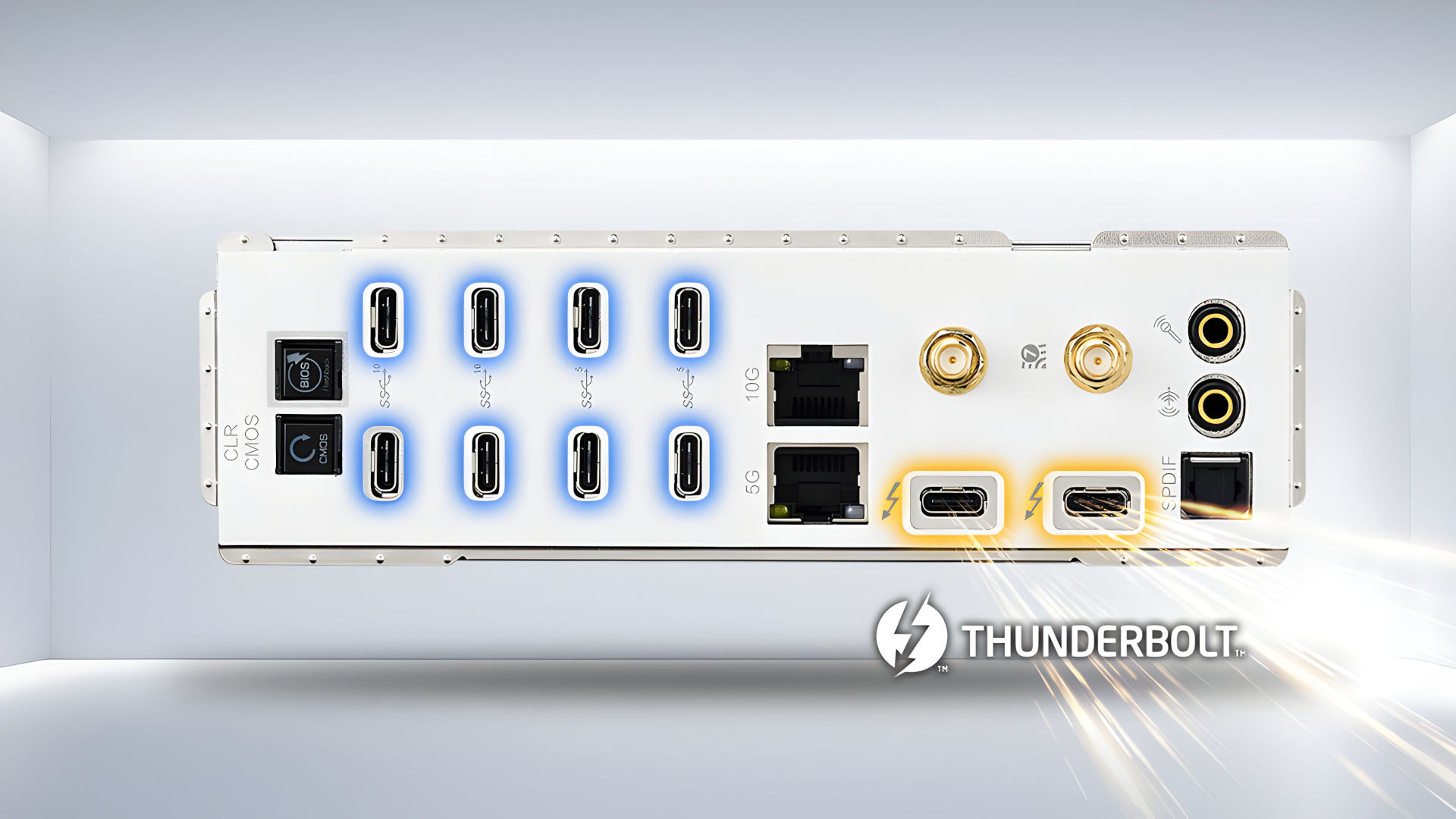Pining for more USB Type-C ports on your motherboard? ASRock's solution is a wee bit extreme
Just one or two Type-A ports around the back would be nice, though.

For the most part, change happens slowly in the world of PCs and that's especially true of the humble USB port. Most motherboard manufacturers only throw in a handful of Type-C connectors on the rear IO panel but ASRock has decided enough is enough. Its forthcoming Z890 Taichi Aqua eschews Type-A altogether, offering ten Type-C sockets instead.
News of ASRock's bold move was reported by Tom's Hardware, though I've noticed that the latest AMD and Intel motherboards are all sporting more Type-C ports on the rear panel. For example, MSI's X870 Tomahawk Wi-Fi has three and two of those are USB4 capable. That seems like a fair number to me but ASRock clearly thinks otherwise.
As part of its range of motherboards for Intel's Core Ultra 200S series of processors, the Z790 Taichi Aqua is very much a niche motherboard. That's because there isn't a single USB Type-A socket on the back; it's 100% Type-C and oh boy, does it look weird.
I don't mean that in a critical sense, more just that's such an unusual sight. The Type-C USB connector was first introduced back in 2014 (yes, that's right—ten years ago) but the desktop PC world has been very slow at adopting the format. I bought an ASRock Z790 Nova motherboard earlier this year and it has just one Type-C port on its rear IO panel.
Some of the high-end Intel motherboards I'm currently testing are a little more generous, though none of them have more than three Type-C sockets.
The thing is, as great as it is to see the little universal port making a proper appearance on desktop PCs, I think binning Type-A ports altogether is a mistake. If you have a wired gaming keyboard or mouse, then it's almost certainly going to be Type-A. Same with headsets, speakers, webcams, even VR headsets.
Even if you're looking at that ASRock motherboard and going "That's the one for me," you're almost certainly going to need a whole stack of USB port adapters (or just one very large hub) to make full use of the Taichi Aqua's rear panel. And while the motherboard still supports Type-A with its front connectors, the number available is really down to what your PC case actually has.
Keep up to date with the most important stories and the best deals, as picked by the PC Gamer team.
Now, if all those Type-C ports on the ASRock Z890 Taichi Aqua do float your boat, it's worth noting that they're not equal in terms of USB specification. Two of them are 40 Gbps Thunderbolt 4 ports (not USB4, I hasten to add), while the remaining eight are split equally between 10 Gbps USB 3.2 Gen2 and 5 Gbps USB 3.2 Gen1 connections. And yes, the USB nomenclature is a complete mess.
Mind you, what you should definitely do, before rushing out and buying one, is wait and see what the gaming performance of Intel's Core Ultra 200S processors is like. If it's great and you love a lot of Type-C, then ASRock's motherboard should be right up your alley.
Best CPU for gaming: Top chips from Intel and AMD.
Best gaming motherboard: The right boards.
Best graphics card: Your perfect pixel-pusher awaits.
Best SSD for gaming: Get into the game first.

Nick, gaming, and computers all first met in the early 1980s. After leaving university, he became a physics and IT teacher and started writing about tech in the late 1990s. That resulted in him working with MadOnion to write the help files for 3DMark and PCMark. After a short stint working at Beyond3D.com, Nick joined Futuremark (MadOnion rebranded) full-time, as editor-in-chief for its PC gaming section, YouGamers. After the site shutdown, he became an engineering and computing lecturer for many years, but missed the writing bug. Cue four years at TechSpot.com covering everything and anything to do with tech and PCs. He freely admits to being far too obsessed with GPUs and open-world grindy RPGs, but who isn't these days?


